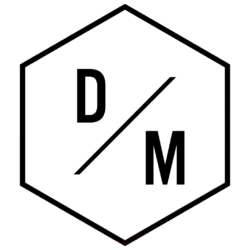Rising operational tempo, expanding attack surfaces and a chronic talent gap are accelerating stress across security teams. This article examines how Cybersecurity Burnout manifests, why it intensifies as digital dependency grows, and which structural and individual measures show promise for recovery. Short, evidence-driven analysis and concrete examples anchor each section, with a persistent case thread following a mid-sized retailer’s security team as they face repeated incidents and escalating pressure.
Cybersecurity Burnout: Key Drivers, Workforce Data, and Real-World Triggers
Cybersecurity Burnout appears where sustained operational pressure meets insufficient staffing and inadequate recovery time. In recent surveys, satisfaction and resilience metrics have degraded, reflecting sharper expectations on defenders while budgets and headcount struggle to keep pace. Workforce data points to persistent vacancies and a churn that feeds more stress for remaining staff.
Consider the hypothetical case of Atlas Retail, a medium-size ecommerce chain. Atlas faces frequent phishing campaigns, nation-state probing, and seasonal spikes in incident volume. A weekend of preemptive containment after a supplier alert forced security staff into continuous shifts. The psychological toll followed the pattern often described by experienced practitioners: disrupted sleep, intrusive worry about systemic impact, and a creeping sense of dread about “the next call.”
Key drivers of Cybersecurity Burnout include workload intensity, unpredictability of incidents, 24/7 on-call expectations, and the cognitive load from continuous alert triage. Each factor compounds the others. When a team is short-staffed, alerts that would otherwise be handled in normal hours are delayed into off-hours, creating a loop of sleep disruption and reduced cognitive recovery.
- Workforce shortages: persistent unfilled roles increase per-person load.
- Always-on threat environment: attackers operate around the clock, forcing defenders to be ready.
- Alert overload: noisy telemetry and false positives elevate cognitive load.
- Low visibility successes: successes are rarely visible externally, leaving staff with low morale.
- Blame culture and regulatory pressure: investigations and post-incident reviews can be harsh.
The Atlas Retail example highlights how preparatory work — disconnecting devices, running scans, and communicating with partners — can be as draining as recovering from an actual compromise. These proactive responses to threats such as modern ransomware campaigns and advance reconnaissance by sophisticated groups are now routine scenarios. Atlas’s security lead noted a pattern: early-warning cues often trigger extended windows of vigilance even when the incident is mitigated quickly. That sustained vigilance is a core pathway to burnout.
| Primary Driver | Operational Effect | Human Impact |
|---|---|---|
| Open vacancies | Higher per-person ticket load | Chronic exhaustion, reduced recovery |
| Alert overload | Excessive triage time | Decision fatigue, slower response |
| High-consequence threats | Extended incident windows | Anxiety about societal impact |
Industry reports show turnover is especially high in entry-level operations roles, where individuals are exposed to the heaviest stream of alerts and often lack mentoring or psychological safety. Early-career defenders frequently face a “trial by fire” environment that shapes long-term career decisions. To address this, organizations must combine hiring strategies, sustainable scheduling and measurable changes to monitoring systems.
Insight: Addressing the root operational drivers is the only way to break the cyclic nature of Cybersecurity Burnout; treating symptoms without system redesign leaves teams vulnerable to the next incident wave.
Cybersecurity Burnout Solutions: Organizational Policies, Staffing, and Engineering Controls
Solving Cybersecurity Burnout at scale requires policy, engineering and human-centered investments. Workload redistribution, defensive automation, and explicit recovery processes all play complementary roles. This section dissects organizational levers and provides case-level examples for scalable implementation.
At Atlas Retail, leadership enacted a three-part approach: (1) hire-to-plan to close critical gaps, (2) invest in automation to reduce repetitive triage, and (3) formalize off-call recovery windows. Each move reduced immediate pressure and signaled institutional commitment to staff welfare. Practical interventions like shift rotations, mandatory rest periods after major incidents, and pairing junior analysts with senior mentors lowered attrition.
- Engineering controls: invest in well-tuned detection to reduce false positives.
- Automation: script common triage steps and use playbooks to reduce manual cognitive load.
- Staffing strategy: prioritize hire-to-plan for front-line roles to reduce excess on-call duty.
- Policy: introduce guaranteed post-incident recovery time and psychological debriefs.
- Metrics: track mean time-to-acknowledge and team recovery compliance.
Automation must be pragmatic. For example, rule-based enrichment for phishing alerts can filter trivial cases, while machine learning classifiers prioritize likely incidents. Atlas implemented a set of automated enrichment jobs that reduced analyst time on common phishing alerts by nearly 40%, freeing time for deeper investigations and mentoring. Automation paired with clear escalation criteria keeps humans focused where judgment matters most, helping curb the monotony that accelerates burnout.
| Intervention | Implementation Example | Expected Benefit |
|---|---|---|
| Automated triage | Script enrichment and prioritization | Less repetitive work, faster response |
| Shift rotation | Structured on-call schedules with recovery days | Reduced chronic sleep disruption |
| Mentorship | Pairing junior analysts with seniors | Skill growth and resilience |
Policy signals matter as much as technical fixes. Organizations that set expectations around after-hours contact and enforce rest periods demonstrate a culture that values employees as people, not unlimited assets. In regulated sectors, compliance teams can partner with security leaders to shape policies that both satisfy audit requirements and include human-centric safeguards.
Resources and partnerships amplify internal efforts. For example, collaborative platforms that offer shared threat intelligence reduce the burden of reinventing detection rules. Public-private exchanges and industry consortiums can also provide surge support during large campaigns. See collaborative platforms and thought pieces on evolving AI-assisted posture management at https://www.dualmedia.com/linkedin-develops-ai-powered-security-posture-platform-to-combat-cybersecurity-threats/ and practical incident response insights at https://www.dualmedia.com/ai-agents-cyber-defense/.
Insight: Organizational interventions must be measurable, repeatable, and backed by engineering work that reduces unnecessary manual effort. Without measurable reduction in load, burnout will re-emerge with the next attack wave.
Digital Defender Wellness: Training, Neuro-Aware Interventions, and ResilienceTech
Individual-focused strategies complement structural reform. Digital Defender Wellness programs, such as targeted cognitive training and resilience coaching, address the neurochemical and behavioral pathways of burnout. Programs that blend therapy-informed techniques with workplace adjustments are gaining traction in security teams worldwide.
CyberMind Balance and ResilienceTech are brand-like labels for integrated programs that combine stress management, cognitive training, and operational adjustments. These initiatives emphasize predictable schedules, neuro-aware training regimens, and rapid access to professional support when necessary. For frontline analysts who face intense alert streams, these programs offer a toolbox for recovery and sustained performance.
- Neuro-aware training: interventions designed to rebalance stress response systems.
- Digital Defender Wellness curricula: modular courses on sleep hygiene, workload pacing and cognitive strategies.
- Peer support networks: structured buddy systems and post-incident debriefing.
- Access to mental health services: confidential counseling and trauma-informed care.
- Physical health programs: exercise, nutrition and sleep support integrated into schedules.
In practice, Atlas Retail piloted a CyberMind Balance program that included short daily “reset” sessions, guided breathing and 20-minute focused recovery blocks after intense incident windows. The program also provided access to an on-demand counselor and introduced a clear escalation pathway for emotional injuries. After six months, self-reported measures of stress decreased and staff retention in operations improved.
| Program Component | Purpose | Operational Example |
|---|---|---|
| Guided resets | Interrupt escalating stress | 20-minute group breathing and reflection |
| On-demand counseling | Immediate clinical support | Confidential teletherapy sessions |
| Education modules | Build long-term coping skills | Workshops on sleep, pacing, and boundaries |
Third-party initiatives such as BlueShield Cyber Resilience and SecuCare programs offer models for employer-subsidized wellbeing. Programs can be licensed or adapted, but success hinges on integration into everyday operations rather than optional extras. For teams where “heroes only” language prevails, re-framing well-being as a performance requirement can reduce stigma.
Industry projects aimed at normalizing recovery and training can be found in cross-sector forums. For clinical-style triage approaches in high-stress roles, see relevant healthcare and operational triage strategies adapted for security professionals at https://www.dualmedia.com/healthcare-professionals-triage/.
Insight: Individual wellness programs must be built into the operational fabric. When Digital Defender Wellness is optional or underfunded, uptake is low and benefits are limited. Real impact requires scheduling, measurement and leadership endorsement.
SecuCare, Firewall Focus, and Tools for Recovery: Platforms, Playbooks, and Talent Paths
Operational tools and career design both reduce the drivers of Cybersecurity Burnout. SecuCare-style managed services, vendor-led resilience platforms and internal playbooks take repetitive tasks off analysts’ plates. Equally important are deliberate career tracks that prevent stagnation and align professional growth with workload realities.
SecuCare and Firewall Focus are archetypal names for vendor and service bundles that provide predictable outcomes: outsourced monitoring for low-sensitivity workloads, escalation pathways for complex incidents, and coached handoffs to internal teams. These arrangements free internal staff to focus on strategic tasks and reduce exposure to noisy, low-value alerts.
- Managed detection services: absorb baseline alert noise and provide escalation.
- Playbooks and runbooks: consistent, tested procedures for incident handling.
- Continuous learning: certification and rotation programs to combat monotony.
- Career architecture: clear paths from analyst to engineer or architect to retain talent.
- Peer escalation networks: cross-company pacts for surge support during large campaigns.
At Atlas Retail, a move to an adaptive threat-handling model reduced burnout by enabling analysts to rotate into threat-hunting and engineering rotations. The rotation enabled rested analysts to return to operations with refreshed perspective and increased ownership of detection quality. Career rotations also aided recruitment as candidates valued exposure to multiple disciplines.
| Tool or Program | Function | Burnout Mitigation Effect |
|---|---|---|
| Managed detection | Outsource low-value alerts | Reduced daily alert load |
| Playbooks | Standardize response | Lower cognitive overhead |
| Rotation programs | Provide role variety | Improve retention and skills |
Technology choices can either relieve or amplify stress. Poorly tuned detection platforms produce constant noise, while thoughtfully implemented automation and enrichment reduce friction. Governance teams should prioritize platform hygiene: tuning rules, de-duplicating alerts and investing in observability that clarifies rather than confuses.
Public discussion and award programs highlight emerging best practices and encourage adoption. Examples of industry recognition and community learning can be explored at https://www.dualmedia.com/morganfranklin-cyber-awards/ and AI-driven operational insights at https://www.dualmedia.com/nav-thethis-show-ai-insights/.
Insight: Tools and career design must solve for meaningful work and predictable recovery. Without intentional rotation and managed noise reduction, technical investments alone will not eliminate Cybersecurity Burnout.
Our opinion: Understanding the Rising Challenge of Burnout in the Cybersecurity Field
Our opinion synthesizes the operational, technological and human arguments: Cybersecurity Burnout is not merely an HR problem but a systemic risk to organizational resilience. When defenders are depleted, the entire security posture degrades, increasing the chance of missed detection and longer remediation windows. The more digital life depends on reliable infrastructure, the higher the collective cost of ignoring this issue.
Effective responses combine structural changes, human-centered programs and technology that reduces unnecessary toil. Digital Defender Wellness, CyberMind Balance, ResilienceTech and branded approaches such as BlueShield Cyber Resilience or CyberRescue Balance are useful frameworks. But no single vendor or program is sufficient; the most robust plans integrate policy, engineering and measurable human supports.
- Prioritize hire-to-plan and managed services to relieve immediate load.
- Invest in automation and playbooks that remove low-value tasks.
- Build Digital Defender Wellness into schedules and career pathways.
- Measure outcomes: retention, reported stress, incident recovery times.
- Foster a culture that values recovery and recognizes invisible successes.
Practical steps are available now. Organizations can source scanned vendor capabilities like SecuCare or Firewall Focus for outsourcing low-sensitivity monitoring. They can roll out CyberMind Balance interventions and use community resources to validate approaches. For organizations evaluating AI and posture management, early resources include work on AI-driven posture at https://www.dualmedia.com/linkedin-develops-ai-powered-security-posture-platform-to-combat-cybersecurity-threats/ and practical agent-based defense concepts at https://www.dualmedia.com/ai-agents-cyber-defense/.
| Short-term Action | Medium-term Action | Long-term Outcome |
|---|---|---|
| Enforce post-incident rest | Implement rotation programs | Improved retention and response quality |
| Automate repetitive triage | Adopt managed detection | Lower analyst cognitive load |
| Offer counseling and resets | Integrate wellness into career tracks | Resilient workforce and reduced turnover |
Several unresolved challenges remain. Talent shortages persist and nation-state sophistication continues to rise, influencing the intensity of incident response. Public examples of high-value thefts underscore attackers’ increasing scale and ferocity. The sector must therefore balance immediate mitigation with long-term investments in workforce wellbeing.
Last insight: Cybersecurity Burnout Solutions require coordinated investment. When organizations treat resilience as an end-to-end program — from tooling and staffing to neuro-aware recovery and career architecture — they reduce systemic risk while sustaining the people who defend digital systems. Readers are encouraged to evaluate their operations against the measures above and engage vendor and community resources, such as collaboration and healthcare triage adaptations at https://www.dualmedia.com/healthcare-professionals-triage/, to accelerate meaningful change.


